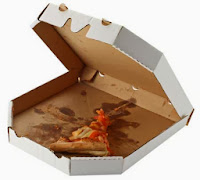Sustainable or “green” packaging is all the rage these days, and
there is no mystery why. The public desires economic sustainability and
renewability, and government policies are moving in the direction of
supporting these efforts. Here are 6 tips for designing sustainable
packaging whenever possible:
Reduce: Less is more. Whenever possible, the least amount of packaging should be used

while
still protecting the product. For example, new bottle designs use
one-third less resin compared to previous bottle designs. In addition,
the smaller a package can be, the better, as long as it maintains its
integrity and protects the product. This is ecologically sound and
reduces costs – a key consideration for designing sustainable packaging.
Reuse: When possible. New
packaging designs make
it possible for customers to reuse
food packaging for other purposes and
thus extend its lifecycle.
Although most products housed in reusable packaging are food, not all are. Sports fashion retailer
Puma now packages its footwear in a reusable shoe bag that has reduced
its paper usage by 65%, thus also reducing diesel, energy, and water
consumption in manufacturing by more than 60% annually.

Recycle: Recycling “recaptures” the resources
used to produce the packaging so that they can be reused again. While
recycling has become mainstream in much of society, in manufacturing,
recycling is still often overlooked because package functionality or
aesthetic appeal takes precedence over environmental concerns.
However, that’s changing. Take a look at the following developments in manufacturing as part
of these 6 tips for designing sustainable packaging:
Recycling is often not possible with packaging when polyethylene
coatings are used, but more environmentally friendly options are
becoming available. While polyethylene coatings have traditionally
been used in carton applications that fold, a new technology from Smart
Planet Technologies called Earth Coating reduces the polyethylene
content by mixing in powdered minerals, rendering the packaging material
recyclable.

Holographic imagery has long made packaging attractive to consumers,
but it generally requires film lamination that renders packaging
non-recyclable. HoloBrite is a new technology that gives the appearance
of a holograph design without using film lamination. This means that
the packaging can be recycled without worrying about contaminating other
paperboard content with the metal and polyester traditionally used in
holographic design. One of the first products to use this design is the
popular Aquafresh White & Shine Toothpaste box.
Ecologic Pulp Packaging
Ever popular, ecologically minded Seventh Generation is using
Ecologic Brands’ molded pulp packaging for its concentrated liquid
laundry detergent. The outer shell is made of 30% old newspapers and 70%
recycled cardboard, which can be recycled seven times over. The inner
pouch of the liquid laundry detergent is made of polyethylene that can
be recycled with the ever-ubiquitous plastic grocery bag.
Change Strategy: Encourage Food Consumption. One
of the major challenges over which ecologically minded folks agonize is
the waste of food. That’s why this tip encourages packaging a food
product so that it can be consumed in its entirety instead of thrown
away as trash.
To that end, manufacturers are now increasingly focusing on packaging
that is reclosable, has “use by” dates clearly marked, and has an
interior “slippery surface” that encourages the complete emptying of the
package, as applicable.

In addition, food manufacturers are weighing the viability of
single-serve packaging versus bulk packaging. As the reasoning goes,
while packaging in bulk is arguably more cost-effective for the
consumer, at least theoretically, single-serve options may be more
consumer friendly AND environmentally friendly if they encourage that
the packaged product be used up in its entirety instead of tossed
because of spoilage.
Renew: Although not originally included as part
of the mantra, “Reduce, reuse, recycle,” “AND renew” is certainly an
option, thanks to today’s new technologies. As an example, packing
materials can come from renewable feedstock such as bioplastics made
from sugarcane or corn. Although ‘renew” ideas are still being
evaluated, they look promising as experts evaluate how they perform throughout their lifecycle and in the recycling stream.
Be transparent with the origin of the packaging
material. Increasingly, consumers, not just retailers, want to know from
where their products’ packaging materials come. While it may be no
surprise that non-GMO foods are increasingly in demand, consumers are
also savvy about the packaging that houses those foods. Stonyfield
Farm’s yogurt cups are made of corn-based bioplastic, but that wasn’t
enough for the company. The manufacturer of those cups couldn’t assure
Stonyfield that they were made entirely of non-genetically modified
corn. To that end, Stonyfield Farm has funded a farm to grow
non-genetically modified corn to ensure that the corn used for its
yogurt cups is grown via sustainable agricultural standards, rather than
simply through standard means.





